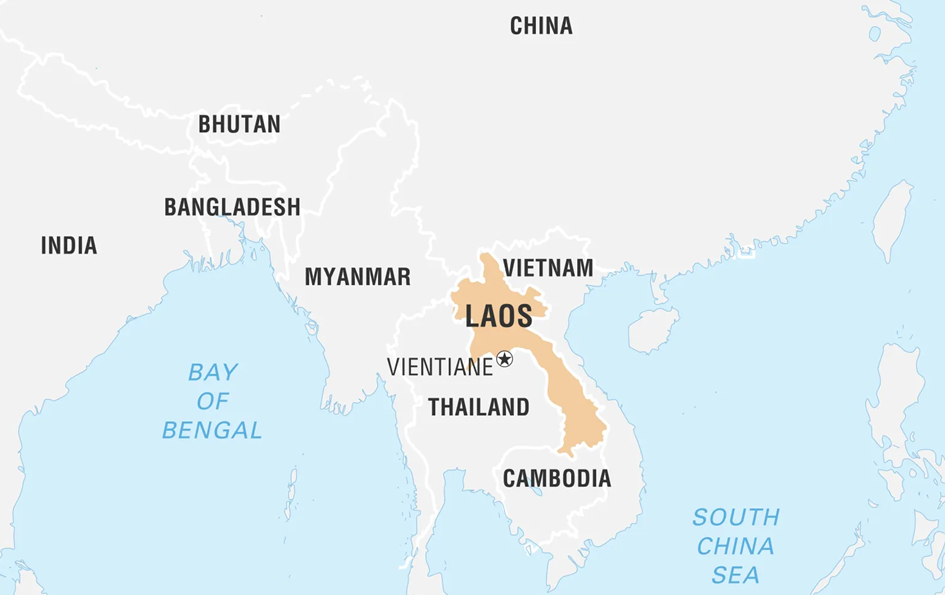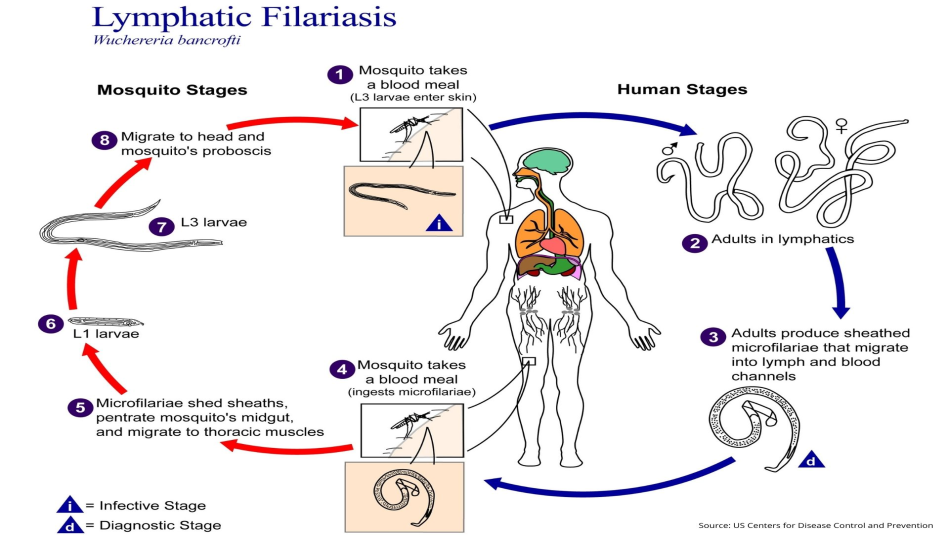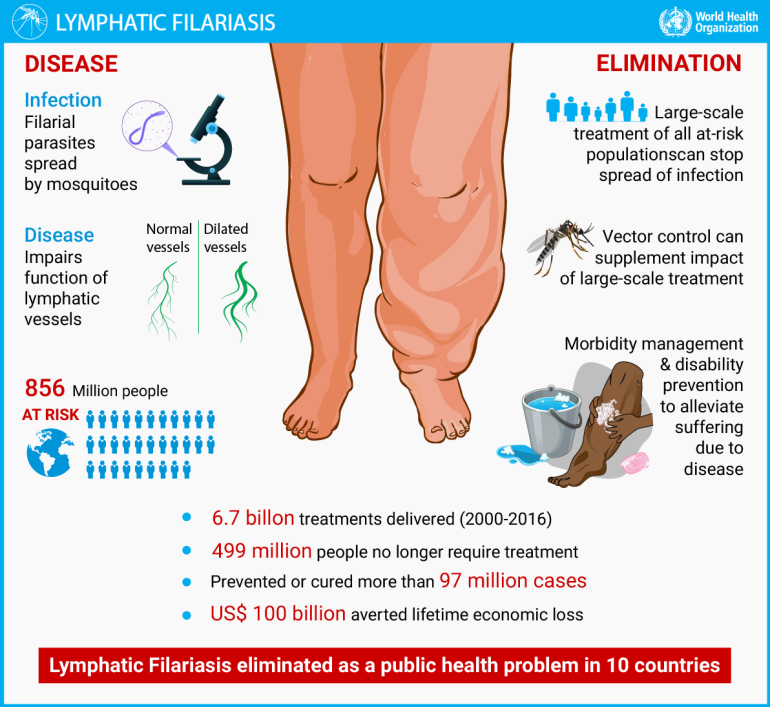Free Courses Sale ends Soon, Get It Now


Free Courses Sale ends Soon, Get It Now



Copyright infringement not intended
Picture Courtesy: www.britannica.com
Context: The Lao People’s Democratic Republic has successfully eliminated lymphatic filariasis (LF) as confirmed by the World Health Organization (WHO).
Details
|
Global Progress on LF Elimination |
●19 countries, including Lao PDR, have eliminated LF according to the World Health Organization (WHO) progress report released on October 13, 2023. ●Among these countries, 11 belong to the WHO Western Pacific Region (WPR), and Lao PDR is the 11th country in this region to successfully eliminate LF. ●Apart from the Western Pacific Region, LF has been eliminated in Southeast Asia (Bangladesh, the Maldives, Sri Lanka, and Thailand), Africa (Malawi and Togo), and the Eastern Mediterranean (Yemen). |
|
Method of Elimination |
●Mass drug administration (MDA) is the most cost-effective method for treating LF in endemic areas and stopping its transmission. ●WHO recommends a triple therapy combination of ivermectin, diethylcarbamazine, and albendazole for MDA against LF. ●Multiple rounds of MDA, covering over 65% of the population, are required. |
|
Global Efforts and Challenges |
●Efforts under the Global Programme to Eliminate Lymphatic Filariasis, launched in 2000, have significantly reduced the global population requiring LF interventions by 53% over the last 15 years. ●Despite progress, challenges remain. In 2022, 794 million people globally required MDA for LF treatment, with India having the highest number of individuals in need. ●While some countries have stopped MDA nationally, they are yet to meet the validation criteria. Kenya is making progress towards LF elimination. ●Gabon in Africa has not yet begun MDA efforts for LF elimination. |
|
Global Sustainable Development Goal |
●The elimination of Neglected Tropical Diseases (NTDs), including LF, by 2030 is a primary objective of the United Nations-mandated global sustainable development goal of "health for all" (SDG 3). ●The achievement of LF elimination in Lao PDR serves as an example for other countries and contributes to the global goal of ensuring health for all. |
Lymphatic Filariasis (LF)
Transmission
Symptoms and Clinical Manifestations

Impact of Lymphatic Filariasis
|
Individual and Social Consequences |
●Physical disabilities and reduced quality of life. ●Stigmatization and discrimination, lead to social isolation. ●Economic burden due to reduced productivity and healthcare costs. |
|
Community-Level Impact |
●LF perpetuates the cycle of poverty in affected communities. ●Impaired workforce productivity affects economic development. ●Strains healthcare systems and resources. |
Challenges in Prevention and Treatment
|
Diagnosis |
●Limited access to accurate diagnostic tools, delaying timely treatment. ●Challenges in diagnosing early stages of the disease. |
|
Preventive Measures |
●Mass drug administration (MDA) programs face difficulties in reaching remote and marginalized communities. ●Compliance issues and the need for sustained, long-term interventions. |
|
Treatment and Management |
●Limited availability of effective drugs. ●Challenges in managing advanced cases and preventing disability progression. ●Lack of awareness and education about LF in endemic regions. |

Global Efforts to Eliminate Lymphatic Filariasis
|
World Health Organization (WHO) Initiatives |
●WHO’s Global Programme to Eliminate Lymphatic Filariasis (GPELF) was launched in 2000. ● MDA campaigns: Distribution of antifilarial drugs to at-risk populations. ●Advancements in research for better diagnostic tools and treatments. |
|
Collaborative Partnerships |
●Partnerships between governments, non-governmental organizations (NGOs), and pharmaceutical companies. ●Donor support and funding for LF elimination programs. |
Conclusion
Must Read Articles:
Lymphatic Filariasis: https://www.iasgyan.in/daily-current-affairs/lymphatic-filariasis-40#:~:text=Filariasis%20is%20a%20disease%20caused,and%20disability%20behind%20leprosy%20worldwide.
Lymphatic Filariasis: https://www.iasgyan.in/daily-current-affairs/lymphatic-filariasis
|
PRACTICE QUESTION Q. What impact does the World Health Organization (WHO) have on global healthcare policies and disease control strategies, and how has its role evolved in response to recent global health challenges? |
© 2024 iasgyan. All right reserved